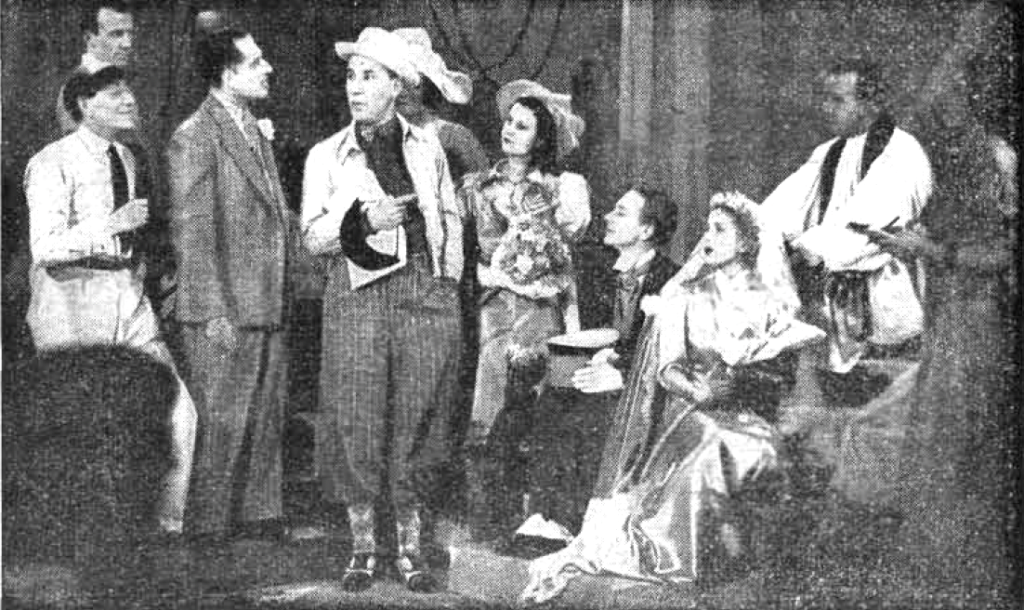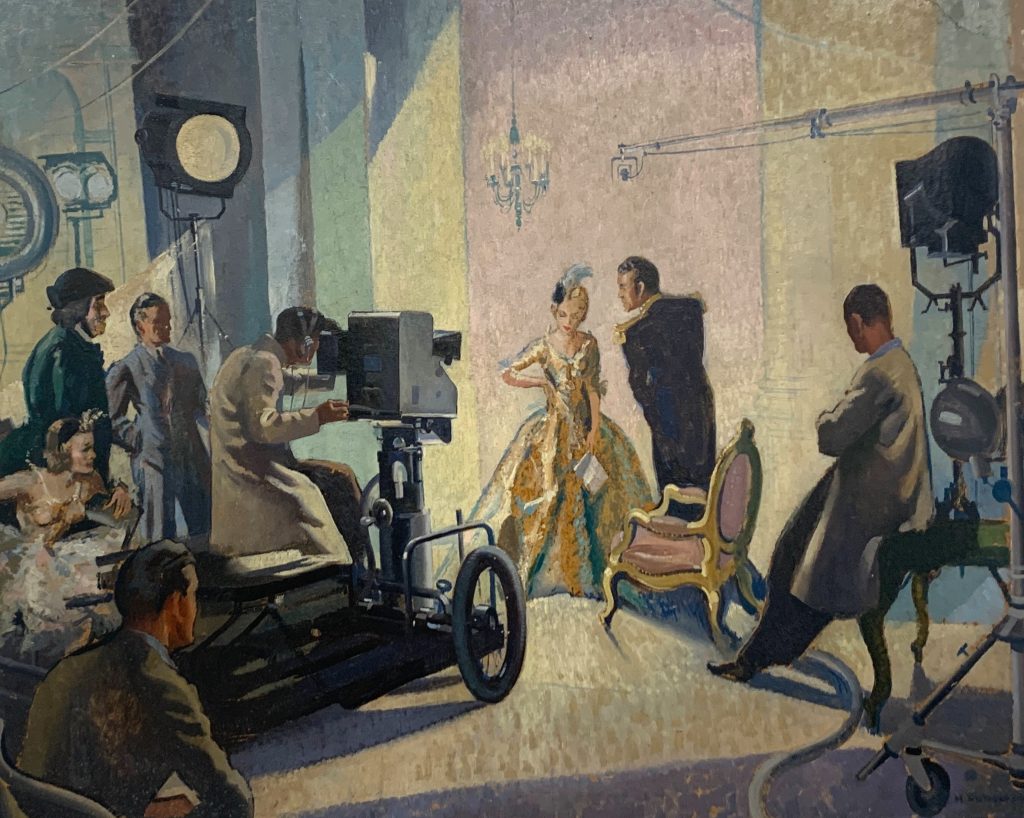OTD in early British television: Xmas reprise 3

John Wyver writes: here’s the third holiday round-up of blog posts from the past month that I have written as preparation for the publication of my book, Magic Rays of Light: British Television between the Wars. The first collection is here, the second here, and one more will follow on Saturday, before normal service is resumed on Sunday.
• OTD in early British television: 6 December 1937: The afternoon of 6 December 1937 saw the first presentation from Alexandra Palace of what became the most popular production among pre-war dramas. Once in a Lifetime by Moss Hart and George Kaufman, adapted for television by producer Eric Crozier (there’s a production shot above), was played six times, including this matinee, with its last outing in early 1939. A satire about Hollwood, which premiered in New York in 1930, and now given a year and a month after the start of the AP service, this was also the most ambitious television staging to date, and the first programme to run continuously for the hitherto unimaginable length of 90 minutes.

• OTD in early British television: 7 December 1937: On this day, Tuesday 7 December 1937, Harry Rutherford squeezed himself into a corner of the crowded Studio A at Alexandra Palace, or so I believe, and made preliminary sketches for his painting ‘Starlight’, the most vivid and alluring image of pre-war television. The contrast between the brightly illuminated elegance of the costumed couple, and the dark mysteries of the dolly-mounted Emitron, the delicate fishing-rod mic, and the looming lamps, is perfectly judged. The finished painting currently graces the reading room of the BBC Written Archives Centre at Caversham, although I fear it fails to receive the attention that it deserves from researchers focussed on their scholarly missions.
• OTD in early British television: 8 December 1937: We might celebrate the television of 8 December 1937 for the one and only appearance of the Trapp Family Singers led by George von Trapp. Formed after winning a singing competition in Salzburg the previous year, the siblings and their father were now on a European tour. They would flee Austria in 1938, settle in the United States, and eventually inspire the 1959 Broadway hit The Sound of Music and the spectacularly successfui film six years later.
• OTD in early British television: 10 December 1937: this day in early British television might be celebrated for the Thursday afternoon in 1936 which featured the first relay of a sound broadcast on the Alexandra Palace service. At 15.59 that day the National Programme announcement was carried of the abdication of King Edward VIII. But I’ve chosen to focus on the troubles a year earlier of an earlier, fictional king, Macbeth. The Friday afternoon of 10 December 1937 saw the broadcast of Scenes from Macbeth, a brief transfer from the Old Vic of part of Michel Saint-Denis’ production with Laurence Olivier and Judith Anderson.
• OTD in early British television: 11 December 1937: the evening of Saturday 11 December 1937 featured an ambitious half-hour broadcast of act 3 of Verdi’s Aida given by the Matania Operatic Society. Opera was an important element of the transmissions from Alexandra Palace, although this broadcast under producer Dallas Bower, a little over a year into the service, was one of the first presentations of ‘grand’ opera.
Gwaladys Garside (Amneris), Dorothy Stanton (Aida), Alec John (Radames) and Joseph Satariano (Amonasro), reputable singers all, led the cast of ten and the ever-versatile BBC Television Orchestra under Hyam (‘Bumps’) Greenbaum was augmented by seven additional players. As for the Matania Operatic Company, I’ve found not a single archival trace, so if anyone can give me a lead to who or what they were I would be most grateful.
• OTD in early British television: 13 December 1937: Presented on the afternoon of Monday 13 December 1937 was the most ambitious television ballet to date, act 2 of, as it was billed, Le lac des cygnes, or Swan Lake to the rest of us. The troupe was the Vic-Wells Ballet Company, from which chrysalis the Royal Ballet would emerge post-war, and this was their production that had premiered in November 1934. Studio manager and now producer D.H. Munro was at the control desk.

• OTD in early British television: 16 December 1937: At 21.07 on Thursday 16 December 1937 the Television service from Alexandra Palace broadcast the sixth in the series Experiments in Science. This 16-minute edition had the subtitle Reconstructing the Past, and featured Margot Eates of the Institute of Archaeology, assisted by Delia Parker and Ione Gedye, demonstrating the reconstruction of prehistoric fragments of pottery from Maiden Castle in Dorset (above).
TV archaeology in action… with gorgeous illustrations to boot. When’s the book due out?
Many thanks, Ian. Publication date still to be confirmed, but ages away yet – which means lots more of these posts to write! Likely exactly a year away, to be ready for the Centenary of television in Britain at the start of 2026. I’ve just had two reader’s reportrs via the publisher, and so I have the final draft to complete, and the images to confirm and licence.